Prince George’s County Healthy Corner Store Initiative Guidance and Toolkit December 2022



Date December 2022
Title Prince George’s County Healthy Corner Store Initiative Guidance and Toolkit
Author The Maryland-National Capital Park and Planning Commission Subject Healthy Communities; Economic Prosperity
Source of copies The Maryland-National Capital Park and Planning Commission 14741 Governor Oden Bowie Drive Upper Marlboro, MD 20772
Series number 982222306
Number of pages 50
Prepared for the Institute for Public Health Innovation in coordination with the Prince George’s County Health Department, this document consists of an in-depth profile of existing conditions for small corner stores in the Healthy Food Priority Areas of Prince George’s County. Retail market conditions and data are analyzed, case studies are examined, and guidance and recommendations for the implementation of the Healthy Corner Store Initiative (HCSI) are provided. A user-friendly toolkit is included to help store owners offer fresh, healthy food items.
December 2022
The Maryland-National Capital Park and Planning Commission
Prince George’s County Planning Department 14741 Governor Oden Bowie Drive Upper Marlboro, MD 20772
www.pgplanning.org
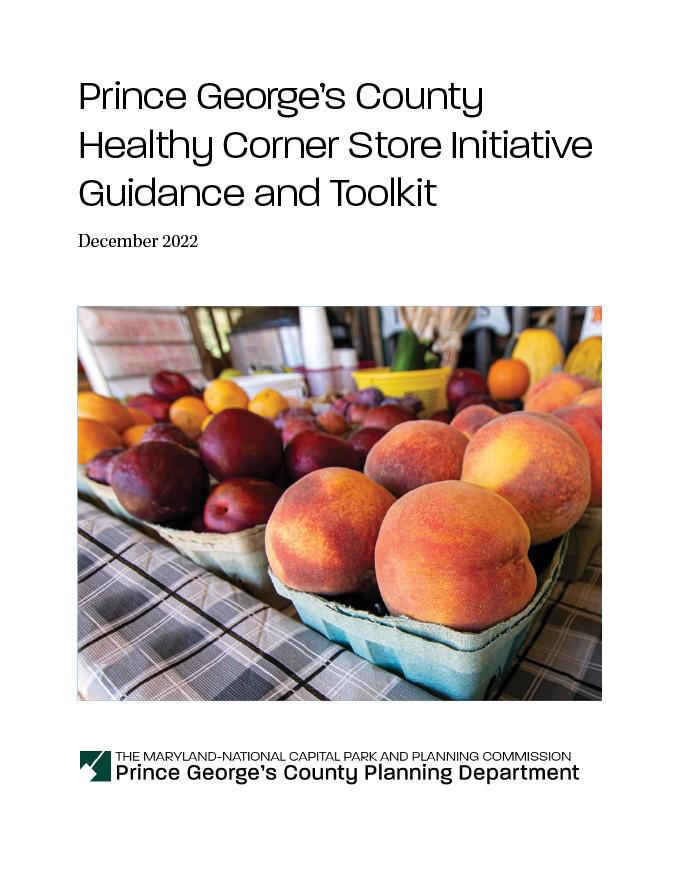
Peter
A. Shapiro, Acting Chair Jeff Zyontz, Vice ChairAsuntha Chiang-Smith, Executive Director

Gavin Cohen, Secretary-Treasurer





Debra Borden, General Counsel



The Maryland-National Capital Park and Planning Commission (M-NCPPC) is a bicounty agency, created by the General Assembly of Maryland in 1927. The Commission’s geographic authority extends to the great majority of Montgomery and Prince George’s Counties: the Maryland-Washington Regional District (M-NCPPC planning jurisdiction) comprises 1,001 square miles, while the Metropolitan District (parks) comprises 919 square miles, in the two counties.
The Commission has three major functions:
• The preparation, adoption, and, from time to time, amendment or extension of the General Plan for the physical development of the Maryland-Washington Regional District.

• The acquisition, development, operation, and maintenance of a public park system.
• In Prince George’s County only, the operation of the entire county public recreation program.
The Commission operates in each county through a Planning Board appointed by and responsible to the County government. All local plans, recommendations on zoning amendments, administration of subdivision regulations, and general administration of parks are responsibilities of the Planning Boards.
The Prince George’s County Planning Department:
• Our mission is to help preserve, protect and manage the County’s resources by providing the highest quality planning services and growth management guidance and by facilitating effective intergovernmental and citizen involvement through education and technical assistance.
• Our vision is to be a model planning department of responsive and respected staff who provide superior planning and technical services and work cooperatively with decision makers, citizens, and other agencies to continuously improve development quality and the environment and act as a catalyst for positive change
The County Council has three main responsibilities in the planning process: (1) setting policy, (2) plan approval, and (3) plan implementation. Applicable policies are incorporated into area plans, functional plans, and the general plan. The Council, after holding a hearing on the plan adopted by the Planning Board, may approve the plan as adopted, approve the plan with amendments based on the public record, or disapprove the plan and return it to the Planning Board for revision. Implementation is primarily through adoption of the annual Capital Improvement Program, the annual Budget, the water and sewer plan, and adoption of zoning map amendments.
Thomas E. Dernoga, Chair, 1st District
Wala Blegay, Vice Chair, 6th District
Wanika B. Fisher, 2nd District

Eric C. Olson, 3rd District
Ingrid S. Watson, 4th District
Jolene Ivey, 5th District
Krystal Oriadha, 7th District
Edward P. Burroughs III, 8th District
Sydney J. Harrison, 9th District
Mel Franklin, At-large
Calvin S. Hawkins, II, At-large
Clerk of the Council: Donna J. Brown
Introduction . . . . . . . . . . . . . . . . . . . . 7
Existing Trends 8
Corner Store Supply . . . . . . . . . . . . . 10
Field Survey . . . . . . . . . . . . . . . . . . . . 11
Case Studies 13
1 . The Food Trust . . . . . . . . . . . . . 13
2 City of Madison Healthy Retail Access Program . . . . . . . . 16
3 Erie County’s Healthy Corner Store Initiative . . . . . . . . 18
Best Practices 21
Marketing and Branding Actions . . . . 23 Marketing and Branding Strategies . . . 24
Appendices 29
Appendix A—Survey . . . . . . . . . . 30
Appendix B—Glossary 33
Appendix C—Field Survey Stores . . 34
Appendix D—Field Survey Results 35
Appendix E—Brochure 44 Appendix F—Toolkit . . . . . . . . . . 45
Acknowledgments 49
Seeking to increase access to and availability of quality healthy food options at corner stores mainly inside the Capital Beltway, the Prince George’s County Health Department launched its Healthy Corner Store Initiative in Spring 2019. The Health Department’s advisory committee convened to provide technical assistance and develop policies. The advisory committee membership included representatives from the Institute for Public Health Innovation, Kaiser Permanente of the Mid-Atlantic States, the Prince George’s County Economic Development Corporation, The Maryland-National Capital Park and Planning Commission, Prince George’s Community College, the American Heart Association, the University of Maryland, Suitland Civic Association, Inc., and Taking Effective Action, Inc.
The initiative seeks to address food insecurity and healthy food access in Healthy Food Priority Areas (HFPA) of the County. In a Healthy Food Priority Area:
1. The ratio of healthy to unhealthy food retailers is low.
2. The median household income is below $67,553, the Maryland Self Sufficiency Standard for a family of four.1
3. More than 5.2 percent of households have no vehicle available.
Prince George’s County residents who live in HFPAs may face more barriers, may travel farther to reach healthy food outlets, or may not have the economic means to afford healthy food options.2 The initiative is timely given the COVID-19 pandemic that has exacerbated health disparities
experienced by the County’s most vulnerable residents. Adding healthier food options to more stores in these communities will improve the health and well-being of the residents and provide an economic benefit for participating businesses.
Addressing food security by increasing the number of local venues that carry fresh fruits and vegetables is not a new strategy. Since 1992, the Food Trust in Philadelphia has been a proponent of this approach and provides guidance to localities across the country. However, there is limited research on how to adapt this model to under-resourced areas to also spur economic development and community participation.
The consultant team gathered ideas and responses from people in all facets of the food economy to begin better coordination and improve understanding among communities. The analysis of independently owned stores in Prince George’s County HFPAs and community store patrons resulted in two documents with two audiences: an analysis for County and nonprofit staff and an implementation guide and a userfriendly toolkit for store owners. The latter is meant to foster partnerships with the Healthy Corner Store Initiative.
Funding for this study was provided through the Planning Assistance to Municipalities and Communities (PAMC) program. Administered through the Prince George’s County Planning Department, the PAMC program offers planning, design, technical, and financial assistance for planning-related projects to local municipalities and community organizations.
1 Healthy Food Priority Areas, Prince George’s County, MD.
2 Johns Hopkins Center for a Livable Future, “Environmental Justice and the Food Environment in Prince George’s County, Maryland: Assessment of Three Communities.” https://www.frontiersin.org/articles/10.3389/fbuil.2019.00121/full
Prince George’s County Planning Department
Healthy Corner Store Initiative
Typically located in densely populated and economically stressed areas where a large grocery store may not be physically or financially feasible, corner and convenience stores can be critical food providers for residents. Usually, corner stores consist of less than 5,000 square feet of space, with limited parking and loading facilities.
Corner stores in HFPAs are most often owneroperated and food offerings are usually limited to those with extended shelf life such as snacks, dry groceries, beverages, and frozen foods. Singleserving items such as a cup of cereal, frozen pizza, or packages of snacks dominate the offerings.
Increased consumption of convenience foods and the rapid expansion of online grocery sales over the past five years have dramatically impacted small and independent retailers. Online grocery sales now account for more than $36 billion annually with 25.7 percent annual growth since 2016.3 Online grocery sales give retailers such as Walmart, Kroger, and Amazon a way to compete where they have no physical stores. These three companies now account for more than 70 percent of all online grocery sales.
As shown in Table 1, the average corner store employs 2.41 workers and has annual revenues of $455,000. Corner stores lost 5.35 percent of their sales during the COVID-19 pandemic, with many failing to maintain a profit margin.4
Data for corner stores indicate a rebound, but not quite to pre-pandemic levels, and store infrastructure investment has diminished. (Store infrastructure typically includes coolers, freezers, shelving, cash registers, baskets, and shopping carts). Some corner store operators own their building and must spend money to maintain parking facilities (if available) and the building itself. Despite the overall economy adding new
jobs at a faster pace, stores have had employment growth of less than one percent per year. During the height of the pandemic, a reduction in urban areas’ foot traffic and a sharp drop in consumer confidence resulted in declining projected revenue for corner stores.
An indicator of corner stores’ vitality (the health of the corner store segment) can be found in the IVA (Industry Value Added)-to-revenue ratio that measures the gross output of the sector. The contributions of the corner store segment to the overall economy include payroll, taxes on products and sales, and operating surplus reinvested. The decline in the IVA/revenue ratio from 14.4 in 2018 to 13.8 in 2022 indicates that the effects of the shifting consumer purchasing patterns during the COVID-19 pandemic may have caused a more permanent shift in buying patterns. In other words, the real market value of the goods sold at these stores is in decline.
The decline in the IVA ratio influences the Healthy Corner Store Initiative in two ways. First, it indicates that owners should focus on improving the market value of goods sold to ensure the continuity of their businesses. Second, it suggests that there will be limited capacity for these businesses to pay for upgrades and improvements that would result in higher sales. Many corner store operators turn to suppliers and others for financial support in the form of trade credits or capital equipment.
Similarly, declining revenue per employee limits the ability of corner stores to provide living wages and reduces the capital available to invest in store changes. Store owners will be less willing to take risks while focusing on an inventory of products that provide high margins and are known to bring customer traffic, but that may not be healthy.
3 IBISWorld, “Specialized Industry Report OD 5085” February 2022
4 Internal Revenue Service, SOI Integrated Business Datasheet
Table 2 highlights the challenges that corner store owners face in paying for store upgrades and changes to their business; for example, offering healthier foods. Of note is the “Days Payables Outstanding” figure which measures the time it takes for a business to pay off its operating credit. At 61.3 days on average, this indicates that stores are relying on suppliers to provide the credit they need to keep their doors open. Cash after Operations has declined by more than half from the 10-year average to the 3-year average. Corner stores have little cash to risk on change.
Revenue Growth 2.64% 4.07% -5.35% 0.53% 1.31% Firm Growth 0.77% 1.87% -6.03% 2.91% 0.90%
Accommodating financial realities is critical to the success of the Healthy Corner Store Initiative. The average store owner is currently taking home just 1.3 percent of revenue based on the threeyear running average, or $5,915 ($455,000*0.013). Compare this to the average minimum purchase requirement of many produce wholesalers of $750 per delivery and the problem becomes clear. Helping business owners understand the potential for change to increase their store’s stability and profitability while reducing the financial risk will be crucial to the initiative’s outcome. Table 1. Corner Store Key Financial Indicators Table 2.
County entities with regulatory approval to sell food number more than 3,500. This number was narrowed to those within the HFPAs (based on 2020 legislation) and to CoStar and property data of building footprint, year built, and property adjacencies. This was augmented with field survey data: site conditions, floor layout, product mix, daily operations, exterior appearance, and assessed capacity to expand operations.
The final inventory totaled 67 stores (shown in Table 3 and Appendix C—Field Survey Stores).
Most of these (68.7 percent) are stores of less than 3,000 square feet. Larger stores (10,000 or more square feet) represent 9 percent of the inventory.
Categorizing the healthy corner store retail inventory based on store type (in a shopping center versus standalone) and property configuration, as shown in Table 4, provided insights on the potential to enhance grocery operations, vehicular, pedestrian, and bike accessibility, current market environment, and equitable consumer access.
In fall 2021, the consultant team conducted a field survey of 46 stores throughout the Healthy Food Priority Areas. Surveys were conducted discreetly and provided information on the store conditions and the typical consumers of each store. See Appendix D—Field Survey Results.
In terms of location and accessibility, most corner stores were in commercial districts with parking: 90 percent off-street and 97.5 percent unmetered. More than one-third (35.9 percent) had transit (bus/train) stops visible from the store entrance, and 5 percent had a bike rack nearby. Over 83 percent of stores had ramps to allow customers easy access to the entrance.
One store had an outdoor seating area and three offered indoor seating. At corner stores, many patrons simply grab a handful of items: only 19 percent of stores offered shopping baskets. Not surprisingly, none of the stores had restrooms for customers. Sixty-one percent of stores had little or no visible pricing. Twelve had in-store cameras, and ten stores had plexiglass or security grates protecting cashiers.

The following case studies offer the best practices guidance for the Prince George’s County Healthy Corner Store Initiative.

In 2004, The Food Trust in Philadelphia, Pennsylvania launched the Healthy Corner Store Initiative (HCSI) as a solution to the lack of awareness about and access to healthy foods in city corner stores. The program eventually expanded to other areas after it was recognized as a national model for improving access to healthy foods. Their program adhered to the following tenets:
• Stores have various levels of readiness for change.
• Building relationships with store owners is vital.
• Simple steps and training will encourage gradual, achievable results.
• Low-income ZIP codes are identified using U.S. Census data.
• Collaboration with community partners is essential.
The Philadelphia HSCI model has five phases that correspond to the continuum of store readiness. Basic levels of change include:
• Phase 1: Introducing a few healthy products into the inventory.
• Phase 2: Using marketing materials to promote healthy food.
During these first two phases, monetary incentives can be given to the stores at the completion of these activities.
When the store is ready, it can move to increased levels of change:
• Phase 3: Business management training for the profitable sale of perishable healthy foods.
• Phase 4: Pursuing a store conversion to expand inventory of healthy foods.
• Phase 5: Obtaining a certification.
Prince George’s County Planning DepartmentCertification as an official Food Trust Healthy Food store lets customers know it is a place to buy healthy food. A significant amount of free technical assistance is provided by the Food Trust with these phases, and stores receive equipment such as refrigeration, shelving, and display materials.
As a result of the program, store owners added an average of four new healthy items to their inventory and health in the communities improved. According to a 2014 Food Trust report, store owners reported higher profits and increased customer demand for healthy products. The report also indicated that property values increased in neighborhoods with healthy corner stores (revealed though an analysis of real estate market conditions conducted as part of the project.)5
It can be difficult to identify corner stores that would be a good fit. Use a list of Supplemental Nutrition Assistance Program (SNAP) and Women, Infants & Children (WIC)-certified corner stores as a guide along with street canvassing to locate corner stores throughout the city.
Language and cultural barriers can prevent the formation of relationships with corner stores.
Hire staff with knowledge of the primary language used by store owners and the community. Provide training and resources in the appropriate language(s). Provide multilingual signage and marketing materials (usually English and Spanish).
Owners often have limited availability due to busy schedules.
In some areas, there is a high ownership turnover which complicates partnerships and can hinder program success.
Corner stores are not seen as part of a healthy shopping culture (people visit for convenience, not for quality products).
Where to start?
Provide one-on-one training with the owners in their store and remain flexible to accommodate their schedules.
Visit or communicate with stores once every six weeks to three months. If a store changes ownership, the new owners can be enrolled in the program and provided with training to make sure they can continue to successfully sell healthy products.

Develop marketing and community outreach that reframe the role of the corner store in the community.
Start small and phase in activities, which allows time for building relationships with store owners to gain trust. This will also help with gauging their level of commitment to the program.
5 Healthy Corner Store initiative: Philadelphia 2013-2014, The Food Trust, 2014, 7.

The City of Madison, Wisconsin recognized they had under-resourced areas with limited access to affordable, healthy food and developed a program to achieve the following goals:
• Increase healthy food access to low-income individuals and families.
• Support food enterprise development and entrepreneurship.
• Increase healthy food choice and improve health outcomes.
• Increase availability of foods corresponding to cultural preferences.
To achieve HRAP’s goals, the city created a grant program that funds food retailers (grocery stores, large convenience stores, cooperatives) with projects that improve food access in communities identified in their Food Access Improvement Map. The retailer is eligible if it is in a priority area or demonstrates that it serves residents from those census tracts.
The program also funds organizations that partner with food retailers to coordinate food access projects or provide technical assistance. The funding of both food retailers and collaborative partnerships allows for creative solutions.

Funding includes purchases of equipment or retail infrastructure, which help with stock improvement for SNAP/WIC certification. It includes community outreach, marketing/ merchandising assistance. It also includes more creative strategies such as mobile groceries and transportation services to connect customers to retailers with healthy food options.
The program does not dictate the specifics of projects but allows food retailers to develop projects that best suit a community’s needs.
Applying and qualifying for grant funding can often restrict programming. (Restrictive grant funding programming requires a feedback loop to assure adherence to community needs.)
Perceived inflexibility of traditional retail methods (lack of internet presence or limited cold storage).
Resources are underutilized by local retailers and nonprofit organizers.
The program lacked measurable goals and was perceived by store owners as aimless at times.
Receiving too few applicants to the program.
Grocery store owners have trouble stocking stores with healthy food.
Adopt a flexible approach that allows retailers to adapt their goods and services to best meet the needs they identify in the communities they serve.
Provide refrigerated lockers that allow retailers to offer online sales and deliver food closer to consumers at a lower cost. This can effectively increase retail service hours.
Hire more staff to identify and develop programs and engage store owners.
Create benchmarks for success and schedule meetings at intervals to review progress, reach out to collaborators, and reflect on existing resources and connections.
Offer a simplified, two-step application. The first round will eliminate anyone who does not qualify, and then the second can ask for more complex information.
Work with a cash-and-carry distributor or with a fresh wholesale market and negotiate purchases of smaller quantities.

Buffalo, in Erie County, New York is one of the poorest cities in the United States. Over the period 2011-2013, Black and HispanicLatino residents in Erie County experienced hospital admission rates (356.6 and 274.4 per 10,000, respectively) disproportionate to that of the overall population (156.1).6 The city, in partnership with Cornell Cooperative Extension of Erie County (CCE Erie), decided to implement a “food-as-pharmacy” program that provides healthy food access to residents who live in areas with limited resources (the case for much of the city’s East Side). The program seeks, in part, to prevent chronic conditions caused by diet-related disease and improve health outcomes without the need for hospitalization, which is expensive and stresses the healthcare system.
The Buffalo HCSI, a program of CCE Erie, has three foci:
• Farm-to-Store Relationships
• Business Support
• Nutrition Education
The HCSI uses surveys to help stores discover what produce customers prefer. Next, it educates store owners about seasonal fruit and vegetables and provides price guidelines. Finally, it provides locally grown, pesticide-free produce for the stores to sell. Store owners have a choice of local distributors. The HCSI helps stores integrate the new products into their business plan. It then provides marketing strategies and facilitates community outreach, including promoting and coordinating healthy food-related events. The HCSI provides equipment (such as coolers) free-of-charge and continued support through communication and information.
6 “Department of Health.” Erie County Health Indicators by Race/Ethnicity, 2011-2013, https://www.health.ny.gov/statistics/ community/minority/county/erie.htm
The HCSI educates the community on stretching a food budget to include fruits and vegetables, maintaining healthy weight, and reducing the risk of nutrition-related illness. It hosts cooking classes and taste-testings for quick, easy, and healthy meals.
The Erie County HCSI initially met resistance from store owners who saw the program as intrusive and representing a point of view that did not fit the culture or needs of their communities. HCSI staff efforts were perceived to be those of an outsider. Disagreements arose about the types of stocking and inventory decisions the stores were making, and communication became difficult or impossible.
To address these issues, the HCSI began to employ staff from the local community. Building and maintaining relationships became the best means to achieve store and HSCI program goals. The CCE Erie Director indicated that was the
most significant and positive move made by HCSI since its inception.
Once trust was established, the HCSI program became aware that a customized approach to each store and community would be necessary. For example, assistance with inventory management, properly programmed point-of-sale (POS) systems and sales floor planning could have a powerful impact on the availability of healthy foods. Given the limited resources at the store level, introducing such changes had to be undertaken incrementally.
The HCSI staff supported local entrepreneurs and distributors who were interested in increasing healthy food options. CCE Erie supported a local food startup that delivers customized, prepared meals for distribution and sale. The HCSI worked with FeedMore Western NY and the Western New York Food Bank and local food distributors to increase sales calls and order frequency of fresh fruits, vegetables, and dairy products that meet demographic and cultural demands.
Program direction continues to be based on the priorities of both the stores and the program. The mechanics are being refined through a collaborative process involving representatives from the entire food supply chain.
Barriers between the store owners and staff for implementing HCSI. Incorporate community feedback into planning and implementation.
Cultural and language barriers between customers and store owners.
Consumers have trouble identifying healthy food and making product choices.
There can be a barrier to healthy food education, and customers may be hesitant to buy healthy food if they do not know how to prepare it.
Create community events hosted by stores that foster goodwill.
Identify healthy food with shelf tags and other signage that explains what makes one choice healthier than another.
Create a free guide to healthy eating that includes simple recipes made with ingredients sourced from healthy corner stores (Erie Grown Recipes). Program may expand to allow for nutritional education classes such as Cornell Cooperative Extension of Erie County’s SNAP-Ed.
Future program direction will be jointly based on the priorities of the stores and the program. The mechanics are being refined through a collaborative process involving representatives from the entire food supply chain.
Erie County’s HCSI Process:
Provide
Run community programming on food health, budgeting, and affordable cooking

Figure 2. ERIE COUNTY’S HCSI PROCESS SOURCE: USED WITH PERMISSION OF ACDS.
Source: Used with permission of ACDS.
The following potentially successful strategies emerged from examining the case studies:
• Use a food access organization to build relationships with potential applicants.
• Start with small changes, such as a hashtag like “#eatwithapurpose” used in Erie County.
• Perform a thorough assessment to understand all stakeholder needs. Is more training on the handling and storage of fresh produce needed? Is offering equipment such as refrigeration? Is technical assistance on sourcing, displaying, and marketing?
• Use strategies that address the specific needs of a store.
• Let retailers decide what works and allow for flexibility.
• Work with local partners (governmental, NGOs, community organizers) from the beginning so their expertise molds program creation.
• Explore healthcare partnerships. The Food Insecurity Toolkit offers physicians and health care organizations a booklet to learn more about food insecurity.
• Promote locally grown foods and partner with their producers.
• Strengthen wholesaler and manufacturer partnerships.
• Explore alternative ways to offer fresh food; for example, explore hosting a farmers’ market if there is available space.
• Increase the use of point-of-sale systems for better inventory management.
• Identify a coordinating entity, such as the Food Trust, that has enough staff capacity and funding.
• Support programs that increase consumer demand, such as Buffalo’s Go Green Fresh Take meals or Erie County HCSI’s A Healthier You Recipe Book.
Source: A Healthier You Recipe Book; Cornell Cooperative Extension of Erie County, https://erie cce cornell edu/resources/hcsi-recipe-book
HEALTHY CORNER STORE INITIATIVE BUFFALO, NY
Prince George’s County Planning Department
This section provides recommendations to enhance marketing and branding opportunities for corner stores. It will serve as a roadmap when laying the foundation for long-term healthy corner store vitality.
The lessons learned during the discovery phase of the project are threefold:
Any program must improve the overall financial health of corner stores. Owners faced with declining revenues will be reluctant to make changes that risk further declines.
Establish a trusted relationship with store owners and local communities before seeking changes in behavior.
Community demographics and store competition will dictate a workable product mix.
With these three factors in mind, marketing and branding should focus on:
• Identifying and building shared values with the community.
• Enhancing the responsiveness of the local food system to local demand.
• Increasing the capacity of shoppers to use healthy foods.
• Assisting small store owners in improving their bottom line.
• Enhancing technology utilization and innovation at the store level.
• Building local capacity in the supply chain. Incentivizing positive changes in behavior.
The strategies address key sectors of the healthy corner store ecosystem—owners, operators, customers, and public agencies. The strategies are not sequential and some will take longer to accomplish; many relate to processes that must be repeated as businesses move in and out of the economy. The need will depend on the variety of players working together or independently. Where possible, actions should build upon and reinforce each other.
As the Healthy Corner Store Initiative develops over time, less public investment will be needed to spur healthy food activity. Initial public investment from County and state government should include financial support for the initiative and participating stores.
Case study analysis and interviews make it clear that values alignment is a critical element of success for any healthy corner store initiative. Achieving values alignment starts with recognizing the uniqueness of each community and understanding that rapport will form the foundation for success. Marketing strategies that can be employed to assist with this include:
• Using existing networks, engage with the community to understand their needs and concerns regarding food availability, affordability, access, and preparation. Networks such as faith-based organizations can provide a foundation of trust from which additional relationships may be built. These networks should be used for:
» Conducting surveys
» Training events
» Sampling foods
» Engaging food entrepreneurs
» Reaching youth audiences
• Learn from store owners and food access providers about the purchasing, lifestyles, and consumption patterns of the neighborhood.
• Recognize that healthy corner stores must be profitable to serve the community and respect that the changes must help them stay in business.
• Create a neighborhood-based action strategy that is simple and implementable with the resources on hand. This may be simply educational material for customers and better labeling of healthy food options.
When trusted relationships are in place, then marketing and branding can begin. This effort should start with making the corner store system responsive to the consumers’ ever-changing demand for healthy foods.
• Use kiosk-based surveys to understand what products consumers wish to purchase but are unavailable.
• Align County resources to ensure they are used effectively.
• Employ technology to bring products to customers in a timely manner.
» Deploy a shared, refrigerated locker system that offers 24-hour healthy food access.
» Conduct crowd-sourced menu development to inform food trainings and meal preparation services (for example, Meals on Wheels or packaged snacks prepared by store owners).
• Host tasting events and mobile markets with support from nutrition educators to introduce the community to foods and food preparation techniques.
• Engage participants such as the Maryland Food Center Tenant Advisory Board in planning and execution.
» Build a cooperative purchasing and distribution model to service a group of local stores.
» Assist in the design and development of a system to increase cooperative purchasing efficiency.
» Develop or increase financial assistance programs to encourage greater liquidity in the local food system.
Interviews and case studies highlighted the need to increase the capacity of shoppers to use healthy, raw food, plan meals, and cook from recipes. It includes using utensils, cookware, kitchen appliances, and pantry staples (cooking oil, salt, pepper, pasta, canned tomatoes, beans). Supporting increased capacity as a marketing activity includes:
• Expanding the range and diversity of training and education events to reach a broader audience.
• Providing on-shelf information about recipes and product pairing.
• Developing co-branded means to distribute pantry staples and basic kitchen utensils.
• Creating branded, culturally based youth engagement activities built around food.
Once actionable market information is available, stores must have the ability to plan, purchase, inventory, market, and sell the products. Given the limited economic means of most store owners, the following actions will be necessary:
• Reduce the costs and risks of changing inventory standards and re-equipping the stores to handle more perishable products by providing low-cost financing and grants.
• Support cooperative purchasing, merchandising, and category management services.
• Create store-level branding capability using tools such as style guides, values-based messaging about healthy foods, and private labeling of store-brand products.
• Support business process improvement to include training on proper use of point-of-sale programs, enhanced financial controls, and improved inventory management.
• Develop a healthy corner store peer group to aid in collective problem solving and marketing.
• Provide design service solutions to increase per-square-foot sales.
The application of modern technology to increase healthy food consumption has been well demonstrated throughout the COVID-19 pandemic.7 Yet, small retailers tend to lag in the adoption of technology to enhance efficiency and reach a broader client base. Modest technology adoptions that may positively impact store sales include:
• Just-in-time product inventory can increase sales capacity without store expansion. Create the APIs (Application Programming Interface) to link Electronic Data Interchange (EDI) systems at wholesalers and distributors to improve HCSI stores’ access to merchandising services.
• Improve utilization of existing POS systems to improve management efficiency. This may include teaching store owners how to use existing systems to simplify ordering, improve fulfillment accuracy, and increase profitability.
• Integrate customer relationship management software within the POS system to improve customer shopping satisfaction. Such a system can assist store owners to better understand the purchasing dynamics of their customers.
• Conduct regular electronic surveys of the community to assist HCSI store owners to better match consumer needs with inventory and stocking decisions. Posting QR code survey links at the corner stores’ cash registers have been used effectively to encourage participation.
• Employ shared technology resources such as a locker-based last-mile delivery network with the ability to allow multiple vendors to access the community 24 hours a day. This will improve customer access to products in the store and allow stores to share the costs of deployment.
• Create a meal-kit fulfillment network with customizable options to suit the individualized needs and desires of the community. The program may be modeled off that of Erie County, New York.
7
https://doi.org/10.3390/foods10081861.
Some of the changes envisioned will require significant support and incentives including:
• Financing events that provide training and healthy food samples at store and community events.
• Funding coupons targeting diet-based health outcomes or those that may expand store owner interest in participating in healthy corner store initiatives.
• Providing grants for community and store innovations that are locally driven and fit the values of the Healthy Corner Store Initiative.
The marketing and branding strategies should be aggressively developed before providing architectural and engineering guidance to store owners. Interviews, store visits, and case studies all demonstrate the need for program development that starts at the store and community level. Once community level buy-in is achieved, program development can proceed in a manner that best suits the local market conditions and stakeholders upon whom success is predicated.
1 Store name:
What are neighboring buildings utilized for?
Majority residential
Majority commercial
Majority industrial
Majority institutional
Majority food stores
Other
What delivery/entry system do you see?
Front door
Back door
Open air/kiosk
Overhead door
Other
Is there evidence of a back-up power source?
No
Maybe
Is there parking available?
No
If there is parking, is it:
On street
Off street
If there is parking, is it:
Metered
Is there a bike rack?
Yes
Is there a nearby transportation-share service?
Other
Is there a bus/train stop visible near the store entrance?
No
Are the following well-maintained? Pavement
Yes No Sidewalk
Yes No Building Exterior Yes No Building Interior Yes No Pavement Yes No Sidewalk Yes No
Is the building accessible to individuals with mobility issues?
Are there streetlights or other light sources visible near the store entrance?
Is there evidence of site security?
Describe the street activity: walkers, community activities, noise level, traffic, etc.
Is there a seating area outside?
Is there a seating area inside?
Yes
No
What products are advertised in the store windows?
Tobacco products/E-cigarettes
Premade Food Products/Deli Items
Beverages/Packaged Foods
Nonfood Products
Services (Financial/Western Union/etc.)
Other
Are there any signs advertising participation in food programs?

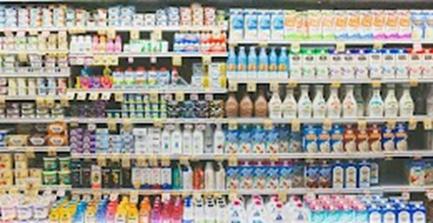
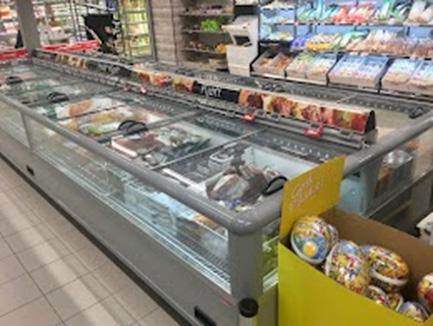

not, what other languages are present?
How many customers were in the store during your visit?
Describe any other relevant store conditions:
Air Curtain Cooler
Reach‐ in Cooler
End‐ of ‐ Aisle cooler
Supplemental Display
Open front cooler using a wall air for insulation
Vertical cooler with doors
Vertical cooler placed at the end of a gondola to highlight specials and support solution selling
Temporary display that Is moved around the store
Outside wall Outside perimeter of the store where coolers of perishable and frozen items are stored
Gondola Shelving that forms aisles
Cage A secure area used to store products such as tobacco and lottery tickets
Multideck
Backup Merchandise
A display case with vertical shelves
In store inventory of high value items
Spoilage Product lost to decay and damage
Shrinkage
Product lost to spoilage and theft
Basic Items Items customers expect to find in the store at all times
Bounce Pattern The pattern of customer flow in a store
Blind Ordering Ordering while inventory is full
Squaring Down Improving the look of worn out displays
Blue Chips
High margin items that are always in stock
Solution Selling Packaging items to sell as a set
Booking Items Ordering in advance to secure better pricing
Consignment sale Distributor stocks product at their own risk
Critical stocking periodThe time that a shelf may sit empty before restocking particularly after a busy period
Cluster marketing A strategy to sell grouped products to customers with similar demographics
Specialty Store
Superstore
Supermarket
Grocery Store
Green Grocer
Convenience Store
Warehouse Club Store
Box Store
Mass Merchandiser
Corner Store
Buying Group
Buying Cooperative
Cooperative Group
Broken Case Pricing
Straight Load Pricing
Merchandising
Category Management
Category Killer
Display Advertising
Display Module
Display Pallet
Shelf ‐ talker
Hardware
Hardlines
Stack Card
Source: ACDS, 2021.
Retail store with a limited number of items
Large format supermarket with extended services and non‐ food products
Traditional grocery store with same store sales of more than $2 million
A retail store that sells a variety of food products, including some perishable items and general merchandise
Grocery store than only sells fruits and vegetables
Small, easy‐ access retail food store with limited products
A large retail store that sells only to members who pay an annual membership fee
A retail grocery store that sells directly from shipping boxes as a form of display
A general merchandisestore offering a large quantity of products such as food at low prices
Small, community based retail food store with limited products
A group of businesses buying non‐ competitive services such as advertising
A group of competitive businesses using aggregated buying power to purchase basic items
A group of independent retailers that own and operate a warehouse to buy in bulk to save money
Higher pricing for products caused by extra handling requirements
Lower pricing for buying by the pallet or truck load
Creative handling and presentation of products at the point of sale to maximize their sales appeal
Technique of analyzing product brands and mix, inventory levels, movement, shelf space allocation, promotions, buying, and profitability to maximize sales
A retailer who enters a market and fundamentally changes the profitability of a line of products
Media prepared for display with a particular item to enhance customer choice
Product shipped on a pallet or similar shipping method that is ready for floor display
A pallet specifically built to be used as a display
A promotional tag or display sign located with the product
Produce items that do not require specialized handling or cold storage to maintain adequate quality
Non‐ food items like batteries, clothing, appliances, and furniture
A sign used to identify and market a product on the shelf
An
■
■ The survey consisted of 32 questions.
in each store.
■ These surveys were carried out by team members from ACDS, LLC and PES Consulting.
■ 58.3% of stores advertised participation in food assistance programs
■ Most stores had product descriptions and products that were not in English. Spanish and Hindi were present
■ 43.2% of stores had produce visible upon entry to the store
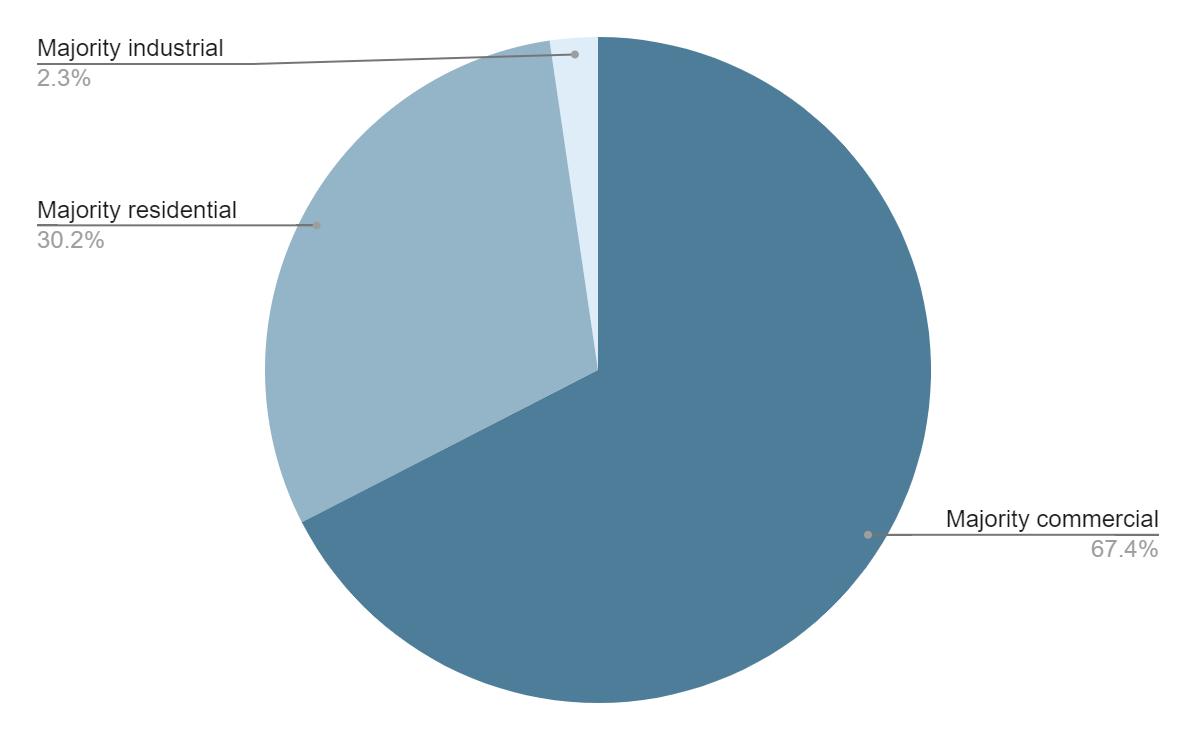
■ End-of-aisle and reach-in fridges were the most common form of refrigeration and refrigerated shelves were least common
■ Stores were most likely to accept cash and credit and debit cards; 62.2% accepted food assistance.
■ 17 stores had an ATM, 12 offered gambling services, and 11 had a coffee station.
■ 54.1% of stores had 1-3 customers present during the survey, followed by 27% of stores with no customers present.
■ Fruit, vegetables, dairy, poultry, and meat were most likely to be “Average” as opposed to “Poor” or “Excellent.”

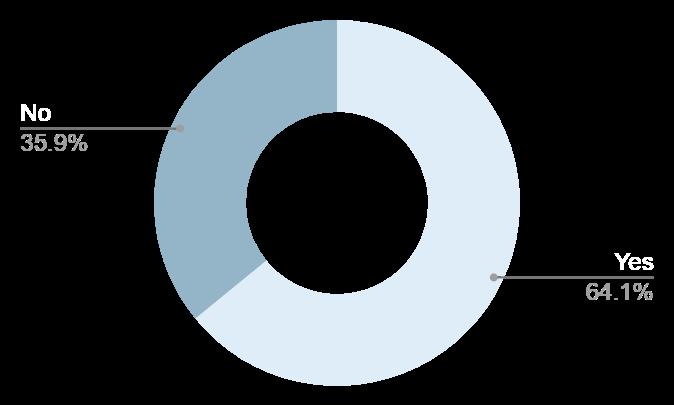
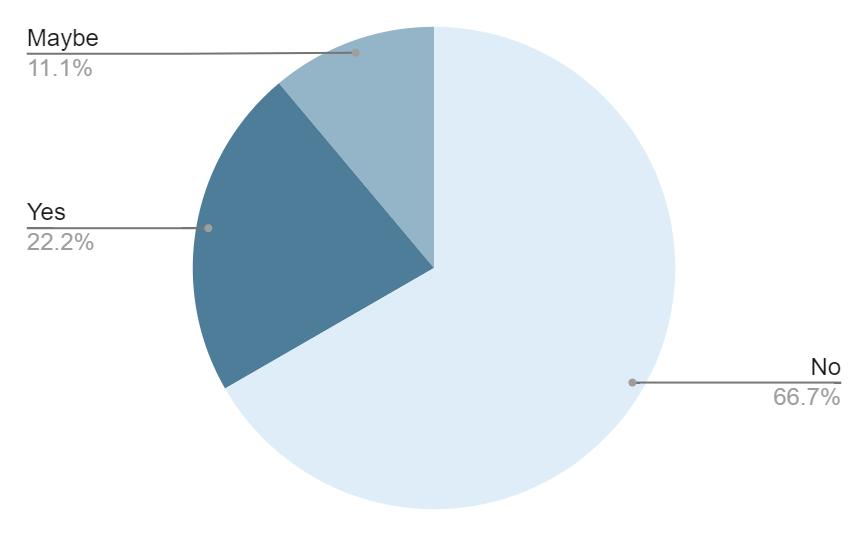



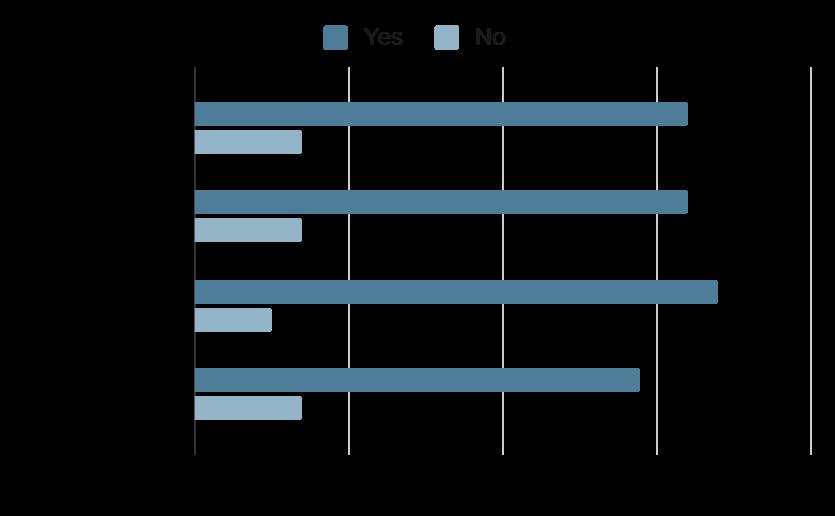
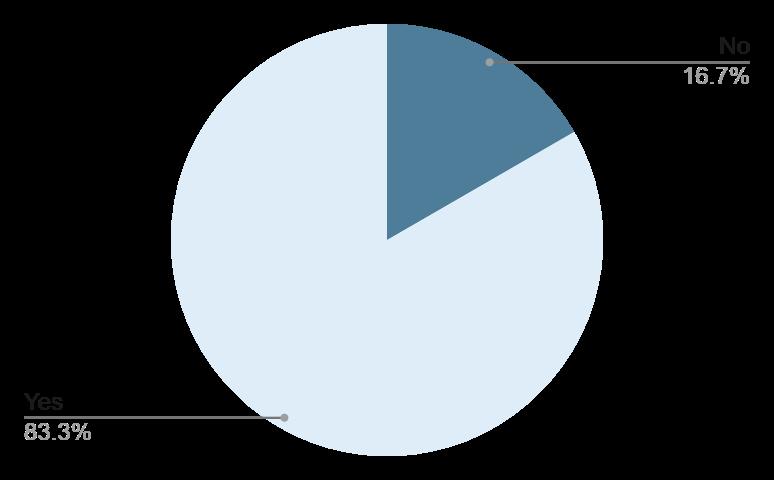



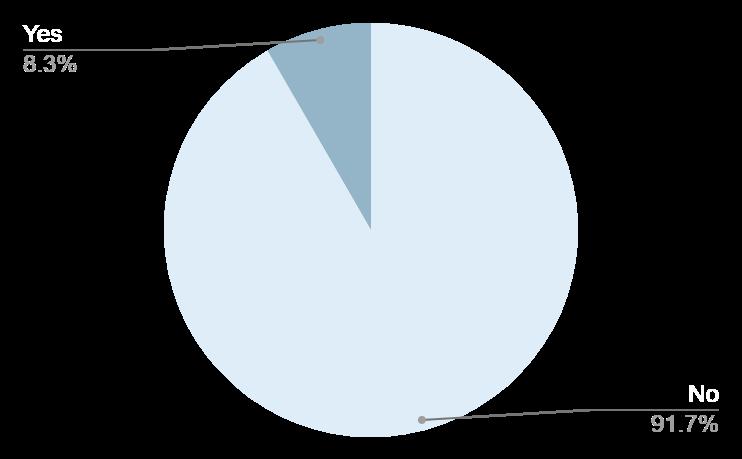
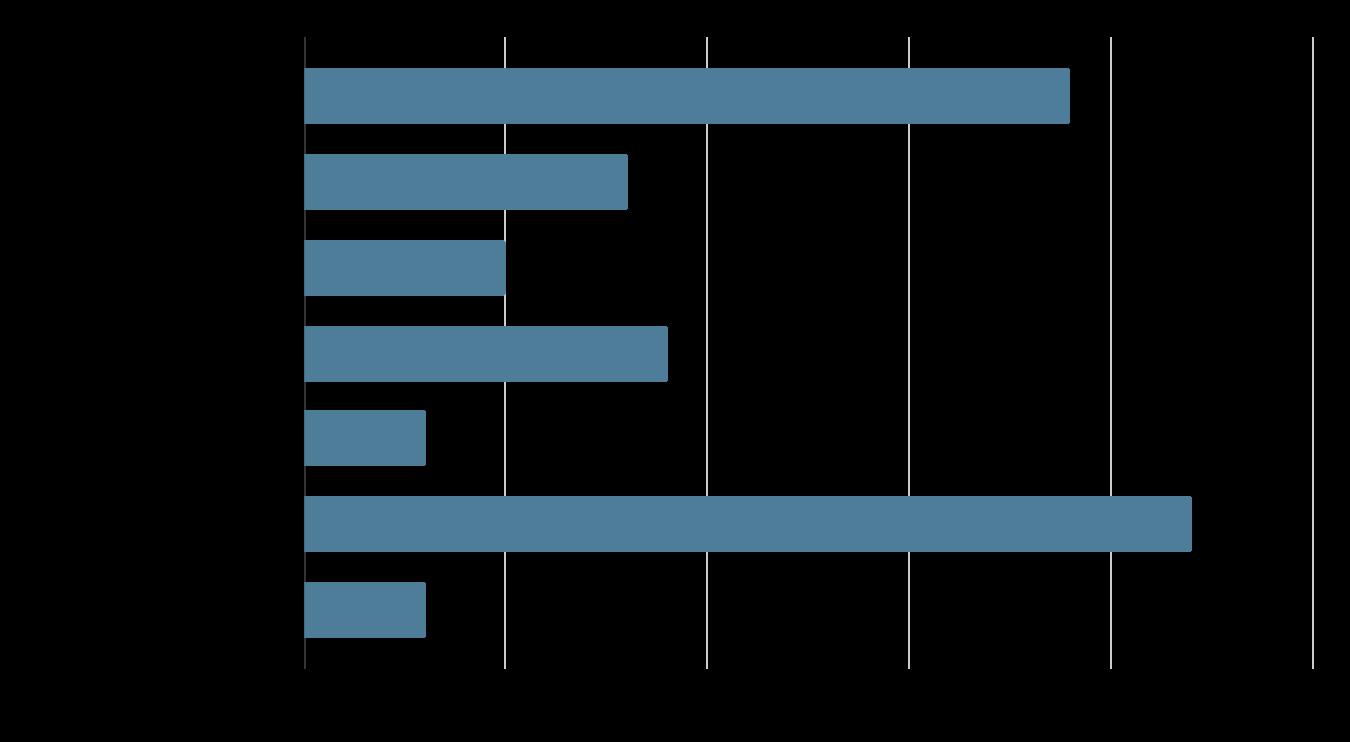
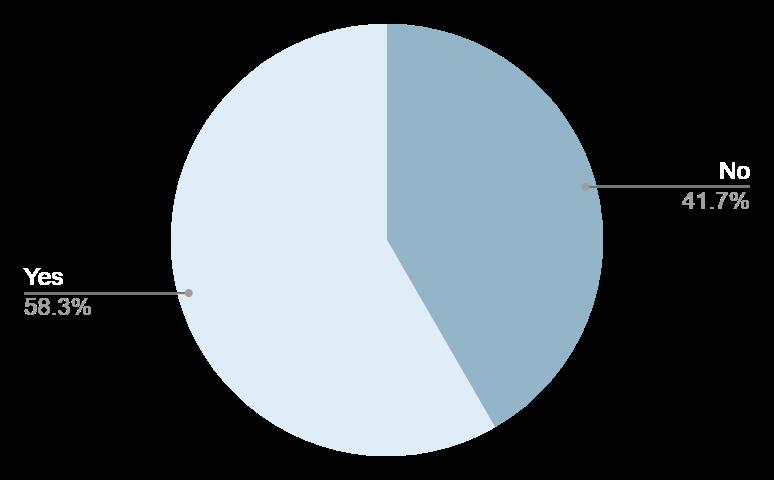


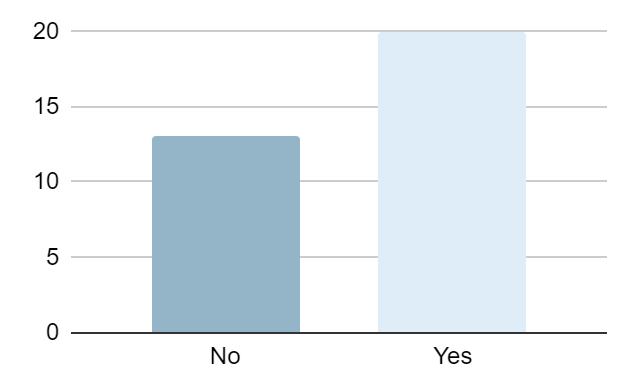

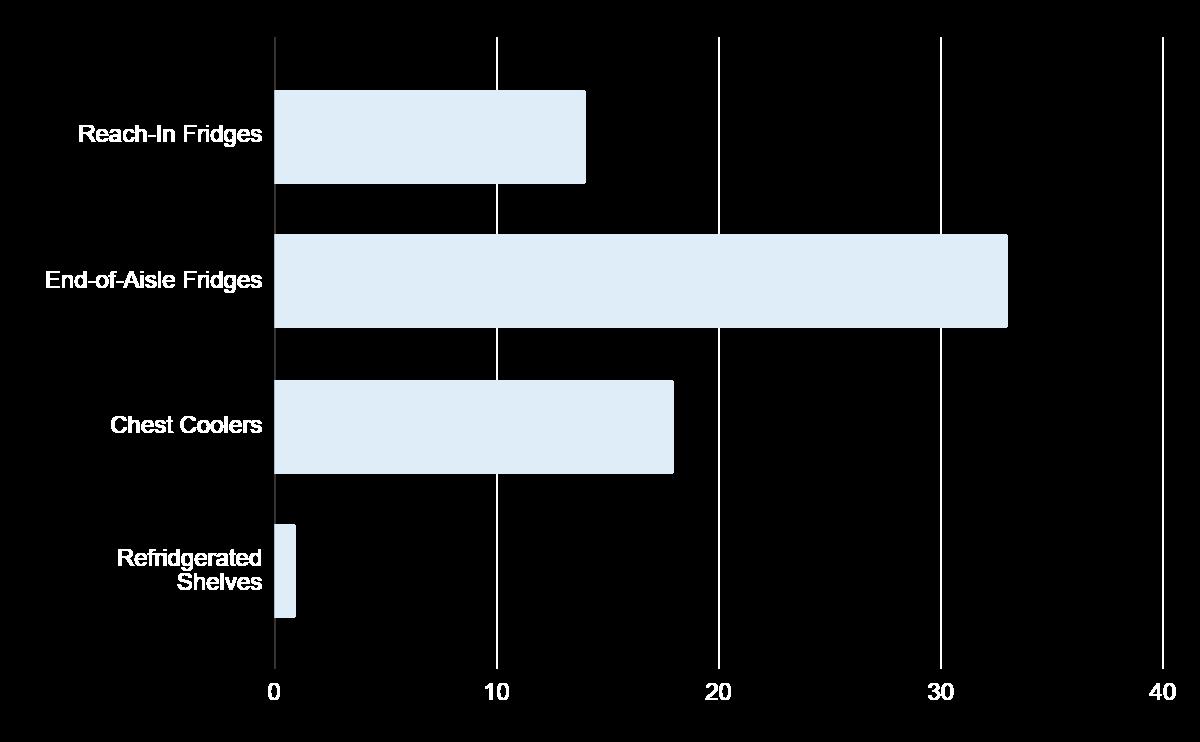

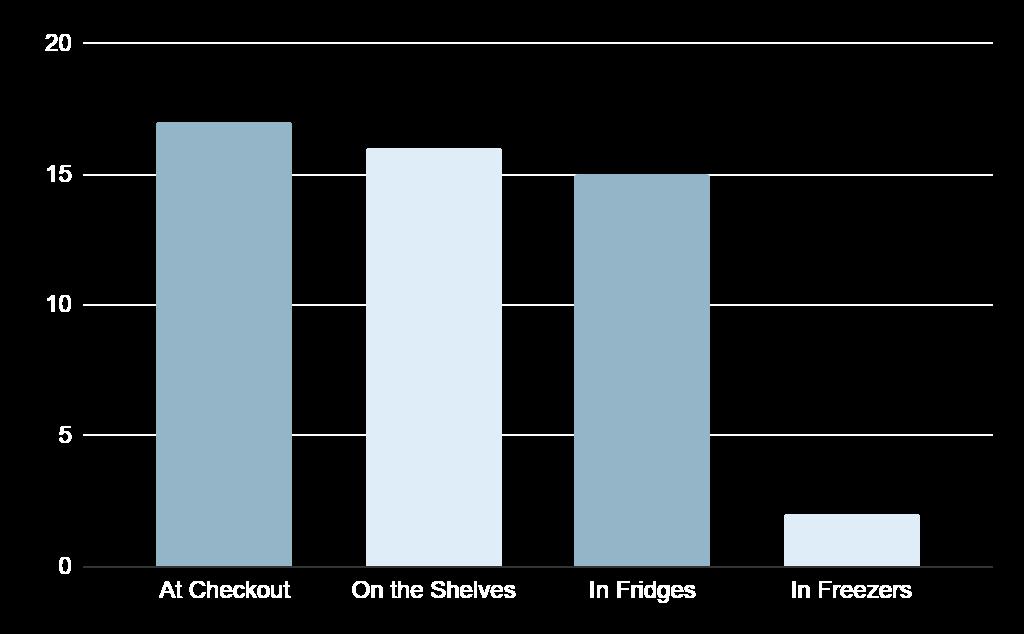



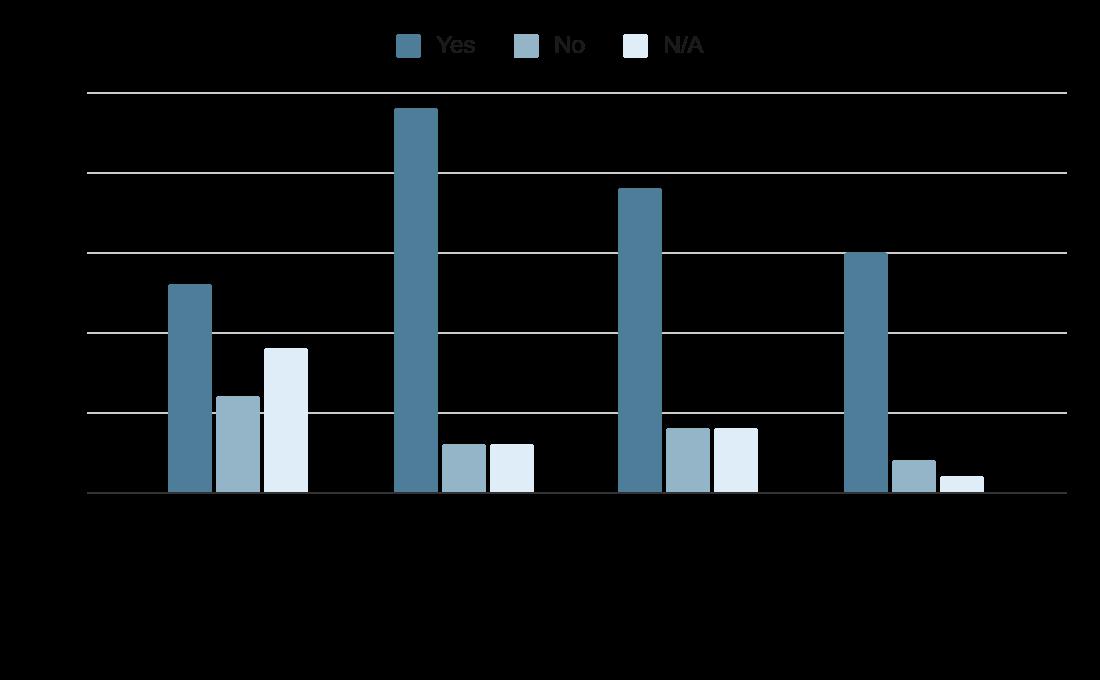
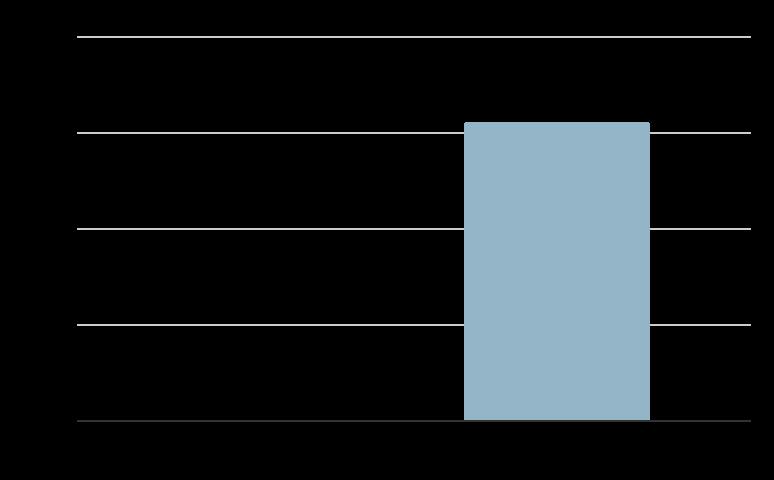

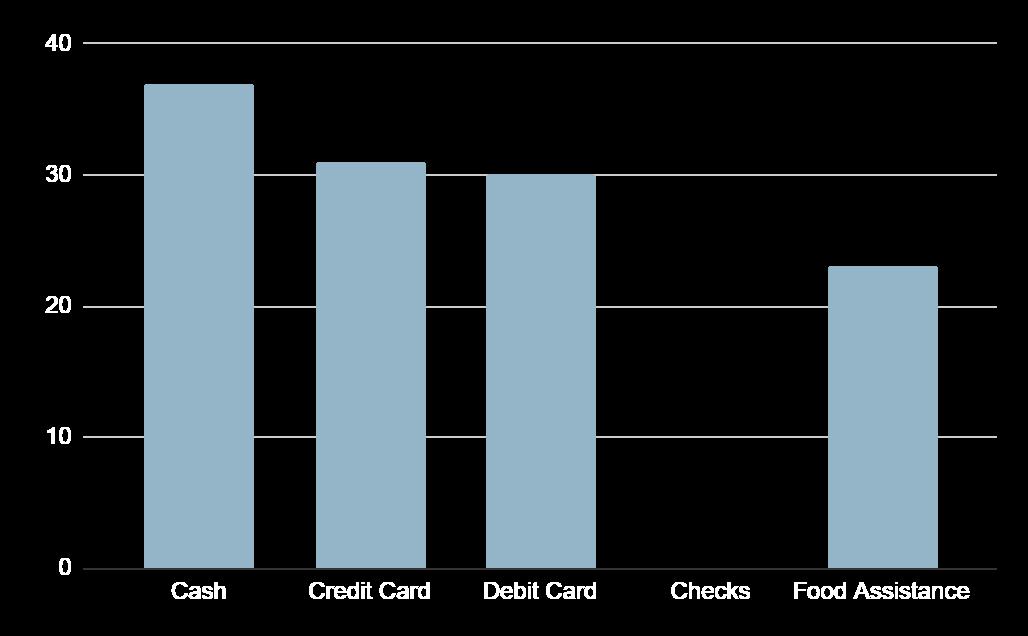


•
•
•
•
•


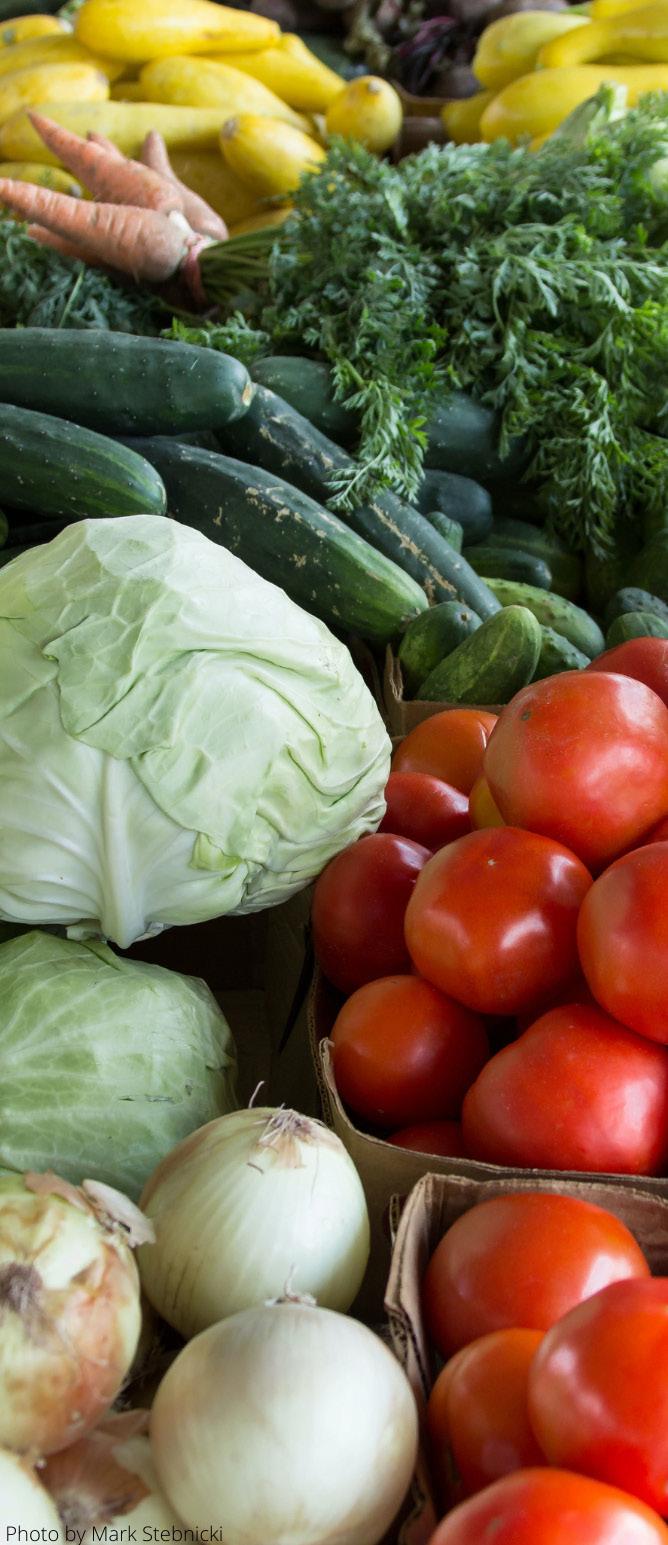

The Toolkit provides help for store owners with healthy food promotions, store layout, display options, equipment upgrades, and distributions.
The promotion of new, healthy food items on the shelves is critical to their success.
Label healthy food across the entire store inventory to allow customers a quick scan for healthy items (typically located proximate to each other). In many stores, a fruit or vegetable image represents a healthy food alternative and can be shown alone or with another price sticker. Incorporate the labeling onto existing store furniture including shelves/ bins/ baskets, immediately next to products, windows, doors, hanging ceiling signs and on the floor as decals with arrows. The two examples below demonstrate alternatives for labeling healthy food. These “shelf talkers” help customers quickly identify the healthy items and can have additional information such as “this item provides extra folic acid.”
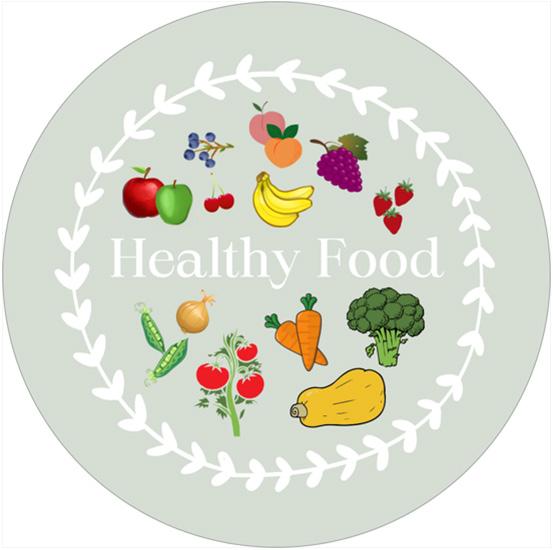
Stickers on the floor that direct customers to fresh produce and other healthy food items may prove useful:



Simple signs can spark customers’ interest in new healthy foods. Many corner stores need to remove dated signs and consolidate signage to allow for new healthy food displays. Tips include:
1. Create new visuals (banners/posters/ signs) for customers, often featuring images and little or few words.
2. Include sufficient lighting and consider translating content into multiple languages.
3. Outdoor signage on sandwich boards can be changed weekly.
To shift consumers’ shopping patterns, offer free samples of healthy food alternatives with accompanying easy recipes and storage tips. Locating a sampling station near the cash register allows store owners and employees to respond to questions and offer further information or hand out recipes. Community organizations such as schools, churches, nonprofits or colleges, may be interested in partnering on these campaigns by offering simple recipes from their members.
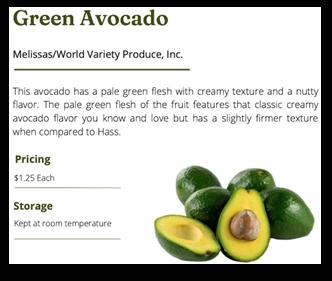
Patrons will be more likely to purchase healthy foods that are familiar to them. Familiarity will be enhanced by making suggestions of other healthy food items that expand the store’s offerings, share shelf space with similar foods, and using signs providing recipes that incorporate more than one healthy food item. The paired food items should share a consistent color to tie them together and not just use the symbol of healthy foods.
Store owners will want to minimize risk when adding new products. One way to reducing risk would be to establish a temporary “buy back” program. Under this program, the County would guarantee up to $1,000 in “take-back” funding for any new healthy food product that did not sell within a specified time period, for example, the shelf-life of an item.
In New York City, the Adopt a Bodega program offers star ratings based on store owners’ involvement in new store equipment to store healthy food, price discounts and community responses indicating healthier store participation.
In Washington, D.C., the D.C. Central Kitchen’s Healthy Corners program began by offering a small sample of store upgrades to stock more variety and quantity of fresh produce. Their 5-for-5 program offered a $5 coupon toward the purchase of fresh produce to SNAP shoppers making a qualifying purchase of $5 or more with SNAP benefits.

An example of a program might include that store owners will be provided with one on-one store layout assessment free of charge. Store owners simply need to fill out an online form and offer three dates and times for evaluations. The assessment will include a tour of the interior and exterior of the property with a list of recommendations on potential changes to layout emailed after consultation.
Prince George’s County Food Policy Council and the Department of Health could fund up to two orders for new display options for fresh produce, with an agreement to use for six months to shelve additional healthy food items. This program could establish a partnership with store owners to purchase new display items: send an image of the item in use at the store, and complete an online form for reimbursement.
Stores may need supplemental electrical outlets and more capacity in coolers and freezer areas. In order for store owners to make this investment, they require training and technical assistance to understand current store needs/ conditions of both the electrical and mechanical systems. An assessment of this system by a trained professional outside of the Prince George’s County Department of Permitting, Inspections and Enforcement (DPIE) will be critical. Refrigeration equipment is costly; Prince George’s County Department of Health and IPHI could assist by providing a match for up to 50 percent of the purchase price of qualifying new equipment.
Corner store owners require more technical assistance when adding healthy produce to stores. Providing simple guidelines for produce handling and storage will make these owners able to train staff and maintain healthy food options. On-site coaching and training as well as supplemental materials delivered with different produce will help owners be aware of healthy food light and temperature requirements.
Prince George’s County Planning DepartmentMost corner stores receive weekly deliveries of packaged items, but research suggests two deliveries per week presents the best conditions for distribution of healthy foods. Fresh produce offered at corner stores depends on the different distribution models available to retailers in Prince George’s County, where the higher costs, delivery fees, and limited frequency of delivery make it a challenge to offer healthy food options. Many corner stores offer products purchased from other retail outlets, such as Costco, Walmart or area supermarkets, and do not restock as frequently as necessary to keep produce fresh.
For corner stores, direct store delivery from a manufacturer represents the ideal distribution method for soda, snacks, beer, and dairy. Two alternatives or a combination of approaches may be necessary to improve distribution to Prince George’s County corner stores:
1. Local Farmers: Form a collective of area corner stores to buy seasonal produce from local farms (May through October). That would require an additional delivery system, but the collective could negotiate better pricing and increased frequency of produce delivery.
2. Buying Groups: Form a coalition of stores to obtain volume discounts for group purchases of healthy produce. Each store would either establish a pickup or negotiate deals with direct-to store vendors. Another alternative would be to use the same practices and incorporate a cost-plus distributor to leverage better pricing.
An initial step would be to have the County Department of Health develop a guide to the region’s produce distributors with detailed information on minimum order size, delivery areas, and offerings.
Within the corner store community, the Prince George’s Healthy Corner Store Advisory Committee could bring together store owners to establish relationships. After trust and relationships are established, there may be opportunities for cooperative purchasing agreements between stores to share healthy products. These types of agreements can reduce costs and help coordinate deliveries as well as meet minimum purchasing requirements.
This project was funded and managed by th Planning Assistance to Municipalities and Communities (PAMC) Program, Prince George’s County Planning Department.
Andree Green Checkley, Esq., Planning Director
Derick Berlage, Acting Deputy Director of Operations
Suzann King, Deputy Director of Administration
Tony Felts, Chief, Community Planning Division
Frederick Stachura, Supervisor, Neighborhood Revitalization Section, Community Planning Division
Daniel Sams, Project Manager and PAMC Program Manager, Planner III, Neighborhood Revitalization Section, Community Planning Division
Wendy Irminger, PAMC Program Manager (2021), Planner Coordinator, Neighborhood Revitalization Section, Community Planning Division*
Zachary Luckin, Project Manager (2021-June 2022), Planner II, Neighborhood Revitalization Section, Community Planning Division*
SmithGroup, ACDS, LLC, Partners for Economic Solutions, LLC
Special thanks to:
Darlene Saunders, Special Projects Manager, Prince George’s County Health Department*
Sydney Daigle, Senior Program Manager, Institute for Public Health Innovation & Director, Prince George’s County Food Equity Council
Bridget Warren, Program Manager, Office of Food Security, Prince George’s County Department of Social Services
* Former employee
Prince George’s County Planning DepartmentThe Maryland-National Capital Park and Planning Commission
Prince George’s County Planning Department 14741 Governor Oden Bowie Drive Upper Marlboro, MD 20772
www.pgplanning.org